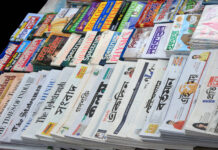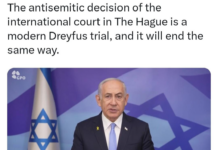Blogger Repi Rafike argues that the recent campaign to ban the hijab in primary schools on the grounds that it is “sexualising children” is an attack on parental autonomy and the right to teach children about their religion.
The hijab – is it a command of Allah or is it a man-made law designed to oppress women and enslave them as the property of their male family members? This is a debate that has gone on for some time but now it has become more intrusive and is being exploited to limit parents’ autonomy.
Many articles have been written on the banning of the hijab and the advantages of doing so. Often the hijab is confused with the niqab (the former is the covering of the head, the latter is the covering of the face) and these articles mainly focus on not knowing who is behind the veil and security concerns. Well actually these articles are saying niqabis are extremists and removing the veil would make us a lot safer… yeah coz it’s niqabi women who have caused all those terror attacks, right?
In fact, is it even “Islamic” terror that is the biggest killer? I don’t know and that’s a topic for another day. Today let’s just focus on the hijab.

Despite being a Muslim, I am also a feminist and a believer in equal rights – shock horror, I know! The mainstream feminists, those who seem to only care for feminism if it suits their own agenda, want to “give Muslim women a voice” by telling them they are oppressed when they wear the hijab and they don’t even know it!
Yeah, that’s right “I want to liberate you by telling you you are wrong about how you feel and who you are; I am going to free you by ensuring you follow me!” I have totally run out of irony on this topic.
I keep finding myself back at the same point defending the rights of women to wear what they want, back to debates that suddenly pull me into Iran and Afghanistan; the idea that by wearing the hijab in Britain that is giving a thumbs-up to oppression of women forced to wear it in such countries. It’s like comparing apples and a chocolate muffin!
Subscribe to our newsletter and stay updated on the latest news and updates from around the Muslim world!
I am a Brit, I enjoy the freedoms offered to me in a diverse society and this right is what I fight for. I am a Muslim that believes the hijab is the command of Allah, an obligation on girls that have come of age. Hijab for me is wider than the cloth on the head – it’s a visual reminder that I am a Muslim, it keeps me in check and reminds me that I must act in accordance with the teachings of the Quran, ensuring I act justly, conducting myself with manners and fairness. That’s my interpretation and an act of worship.
I accept that my interpretation (which Islamic scholars across the main four schools of thought also agree on) isn’t everyone’s interpretation. There are Muslim women who believe it is a command but chose not to wear the hijab, and there are those who outright disagree with it. That’s their choice and they are entitled to it. Something being an obligation does not mean that people cannot chose not to adhere to it.
But those who oppose the hijab seem unable to accept the element of choice and always attach it to a form of oppression, and the latest craze seems to be that it’s a means of “sexualising women” – well young girls to be exact.
“Sexualising young girls”
On September 10 Sian Griffiths and Richard Kerbaj wrote an article in the Times titled: “Ofsted steps into the battle of the hijab.” This article focuses on the efforts of Muslim female activists (some of whom by their own admission are not practising and all of whom don’t wear the hijab) who have called for the banning of the hijab in primary schools as they believe this to be the “sexualisation of young girls.”
They repeatedly talk of girls as young as 4/5 and forget that primary school is up to the age of 11 nearing 12 for some. During the course of primary school a girl could come of age and would be required to wear the hijab. But this isn’t about if a child is required to wear it or not, it’s about parental autonomy and the right for the parent to introduce the child to their faith and culture, and to set a standard they feel appropriate.

The basic concept of sociology is one of Nature vs Nurture and it is universally agreed that the child attains its first moral compass from the home; their values start from there and can then be moulded/changed by society, school, work and so forth.
The UK government legislates for the well-being of children through the Children’s Act and other regulations, and the main objective is to ensure that parents provide for and maintain the child and this includes providing education and intellectually stimulating the child.
It is for the parent to decide what is right for their child. Wearing of the hijab when they are not Islamically-required to do so is less about obligations and more about a child imitating their female role models (often at that age the mother, gran, aunties etc); it’s about teaching the child about being able to be “you” and not to worry if you are different; a means to build confidence, to narrow the gap between the “us and them” approach as the hijabi little girl is just another girl in school who is my friend and not the “other.” Also it encourages children to ask or learn about the hijab, the morals the rules and therefore intellectually stimulating the child.
Ofsted do not have the power to legislate, they simply regulate. But is it right that freedom of expression should be removed in this way? Why does one group’s freedom come above another groups? Is it right that Ofsted should meet with non-hijabi mothers and ignore the voice of the hijabi?
You can follow Repi Rafike’s blog ‘Hijabi on a Train’ here.




















